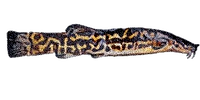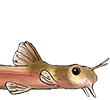Mike Noren wrote:Not to rain on anybody's parade, but the result as reported isn't conclusive. "Close sister-group relationship" to njassae presumably means that it was the fish most closely related to njassae included in the analysis, but without additional information it doesn't necessarily mean the same species - the result would be compatible with these fish being members of a different species closely related to njassae. Also, that the result is from a combined analysis of mitochondrial and nuclear analysis means that the fish can theoretically be a hybrid with njassae as one of the parent species (probably mother, as the cytb fragment is faster-evolving and therefore likely to overrule the nuclear S7 fragment in the analysis).
It is sometimes harder than one might think to identify animals to species with DNA data. Sometimes it's obvious, othertimes not, especially in groups where there aren't many already sequenced DNA sequences to compare with.
This was exactly my interpretation Mike.
The Bayesian analysis will tell us that the fish in question is more closely related to
S. njassae than anything else. This doesn't mean that it
is S. njassae or not, as two
S. njasse with identical DNA will still form a sister relationship, as will any
other species close to
S. njassae, but not in the dataset already.
Basically, what I saying is that it is hard to interpret branch lengths in a Bayesian tree, so I would be interested to know what the raw cytb
P-distance between the two specimens is.






